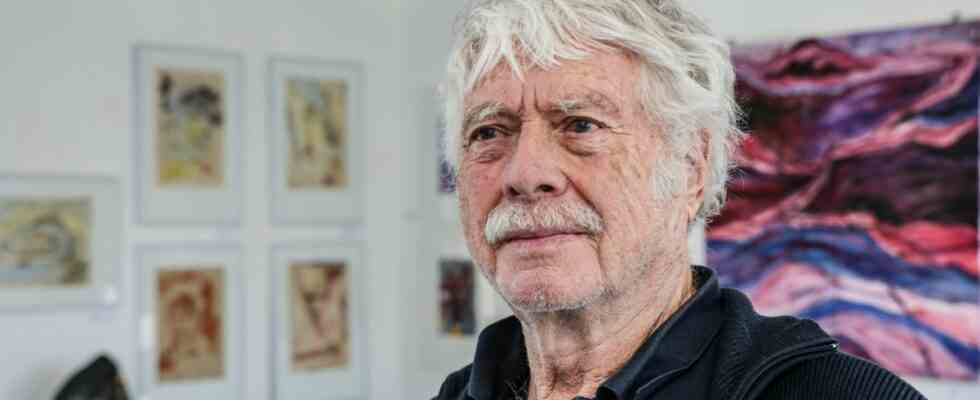When you enter the gallery Kunstwerkstatt of the Karlsfelder Kunstkreis, you are overwhelmed by the amount of objects that can be seen. According to the invitation card, 40 pictures and 40 sculptures will be shown in Norbert Röhrle’s retrospective. The reason for the large number of works in his first solo exhibition is the artist’s 80th birthday, which he celebrated in autumn. Works by the Karlsfeld architect have always been on display in the joint exhibitions of the Kunstkreis, to which he has belonged since 1985.
The period in which the drawings and paintings were created covers almost 60 years. At the beginning there are graphics with motifs from the city of Munich from the 1960s, which were created during his studies at the TU, including in courses given by the Landshut sculptor Fritz König. It was only around 20 years later, at the beginning of the 1980s, that Röhrle, now a father and government architect, devoted himself to art again. He learns and works in the studio of the painter Fred Zigldrum, who died young. While his early pictures were figurative – such as drawings of horses or portraits – they became freer in form, sometimes downright abstract and, above all, more colourful: landscape watercolours, oil paintings, sepia and acrylic.
Among other things, Röhrle was inspired by Picasso’s Blue Period
He was introduced to lithography by Zigldrum, made prints with portraits of the actress Hanna Schygulla, was inspired by a Picasso picture from his Blue Period and drew a portrait of the Spanish artist of the century into a work. At home in the evening he paints a woman he saw on the train on his way to work as a “dream woman from S2”. The most recent paintings in the show include “Organic Network”, a green area covered with a golden network, and a particularly colorful “Dream Landscape”.
His stone sculptures made of granite, gneiss, marble, quartz and other materials are not sculptural works in the classic sense: the stones are found objects that have been shaped and polished by water, glaciers and sand over millions of years. Röhrle discovered the pebbles in Alpine rivers, lakes, on sea coasts, but also in front of his own garden in the Würm or along the way, like a former boundary stone that he turned into a “border manderl”.
While Norbert Röhrle’s early works were representational, over time they become freer and, above all, more colourful.
(Photo: Niels P. Jørgensen)
40 pictures and 40 sculptures can be seen in the Karlsfeld art workshop.
(Photo: Niels P. Jørgensen)
The artist was also inspired by Picasso’s Blue Phase.
(Photo: Niels P. Jørgensen)
Röhrle’s stone sculptures made of granite, gneiss, marble, quartz and other materials are not sculptural works in the traditional sense.
(Photo: Niels P. Jørgensen)
Röhrle tries “to fathom what is dormant in the respective stone – by emphasizing the form with color and lines”. He also wants to make visible what is hidden in the stone through different surface designs, “by hitting, chiseling, drilling, grinding, engraving and polishing,” as he says. With a flex he sometimes scratches facial features into a stone or blue painted googly eyes on a small round piece. While he describes the latter as a gimmick, he sees the creative act as a whole as a craft adventure.
Some of the photos on display, which present Röhrle’s garden and his studio, should not be understood as art, but rather as information. On one of them the artist is shown with a spear in his hand. This may seem strange to some exhibition visitors, unless they know that Norbert Röhrle is Vice World and Vice European Champion in the javelin throw – in the age group over 75.
The vernissage will take place this Friday, February 10, at 7 p.m. in the Kunstwerkstatt gallery at Drosselanger 7. The exhibition is open on Saturday/Sunday, 11./12. and 18./19. February, 2 to 6 p.m.

